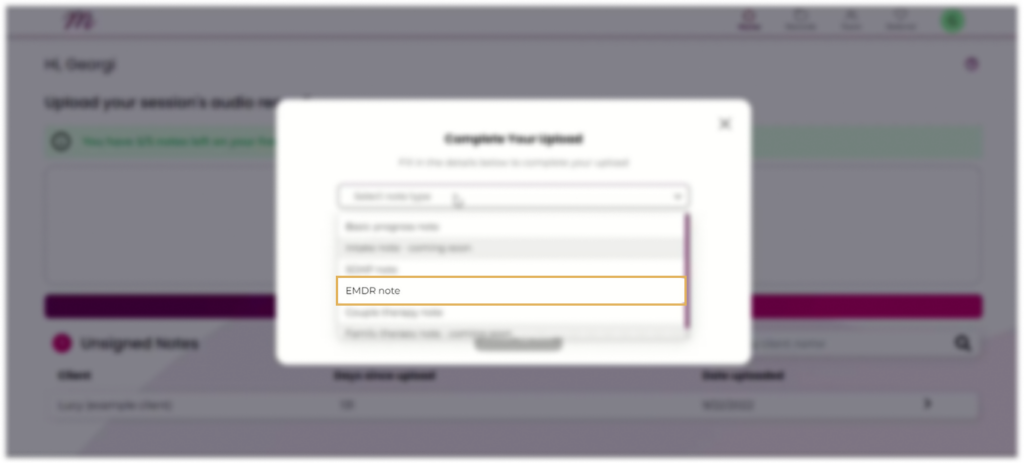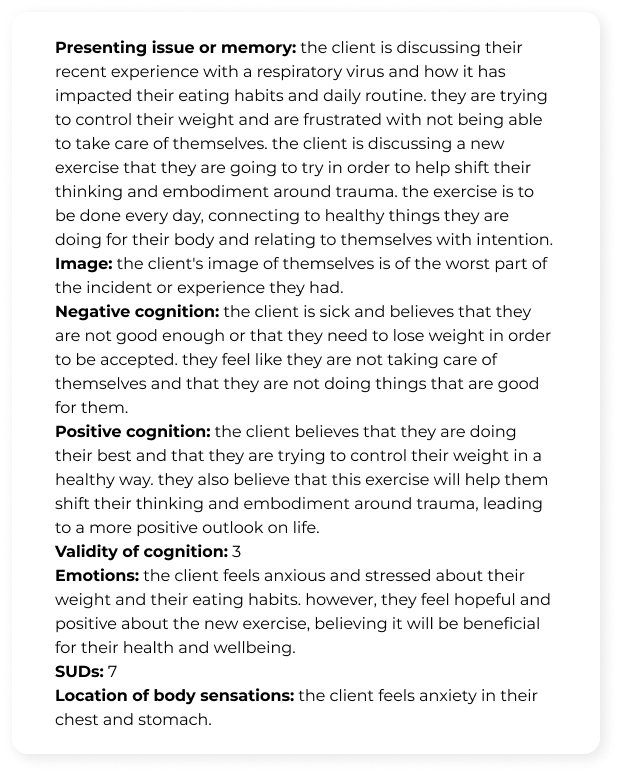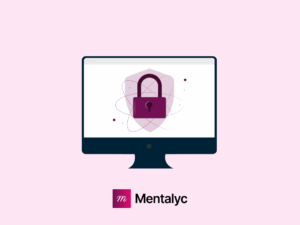EMDR Notes: All Your Queries Answered!
Have you ever found yourself scuffling with upsetting events that negatively impacted your life? You constantly find yourself making unwholesome decisions that you don’t understand, you probably struggle to get through your day, are exasperated by feelings of restlessness, and eventually end up tossing and turning all night long, unexplainably. Well, it is possible that your brain hasn’t been able to properly process something from the past, hanging on to pieces of traumatizing memories in a futile way. It is for such lingering symptoms that EMDR came into existence.
Eye Movement Desensitization and Reprocessing (EMDR) is a form of psychotherapy that has been shown to effectively treat post-traumatic stress disorder (PTSD) and other forms of trauma. It is a relatively new form of therapy and has been gaining popularity among mental health professionals. EMDR is based on the idea that the mind can heal itself from trauma if it is given the right tools to do so. As such, the goal of EMDR is to help the client process and resolve painful memories and emotions related to a traumatic event. In order to do this, the therapist uses a combination of eye movements, talk therapy, and sometimes music or other tools. EMDR also involves keeping detailed notes of the clients progress, which is an important part of the process.
What Are EMDR Notes?
Let’s consider a scenario: whatever events happen throughout your day, the human brain creates narratives of such memories and proceeds to file them away. Conversely, traumatic memories can be thought of as a ripped piece of paper. Our brain is unable to file away scraps of paper, the reason why such memories get stuck and unprocessed. EMDR can be understood from this perspective as taking such scraps, taping pieces together, and rearranging information so as to make sense of it so it can be filed away.
EMDR notes are a specific type of therapy progress notes that are used to document a client’s progress in EMDR therapy. There are several progress note formats available to clinicians, such as SOAP notes, DAP notes, or basic progress notes. EMDR notes are specifically designed to reflect the healing process of EMDR therapy.

New! Transfer your notes to EHR with a single click. No more copy-pasting.
The EMDR notes describe the client’s case through the lens of the EMDR framework, which revolves around positive and negative cognitions, current triggers, and future concerns. The content of such notes can be mapped onto other progress note frameworks, but EMDR clinicians often prefer to follow the framework designed specifically for this approach.
How Are EMDR Notes Different From Other Therapy Notes?
EMDR notes are notably different from other types of therapy notes. The most remarkable difference is that EMDR notes are less inspired by the medical approach to treatment documentation (symptoms, impairments, treatments, outcomes, etc.) as traditional note templates are (SOAP, DAP notes, etc.)
EMDR notes focus instead on cognitions and emotions: pictures, sounds, thoughts, feelings, and body sensations felt in the body and locked in the brain when a traumatic event occurred. Yes, as you might be pondering, those things are less relevant when it comes to deciding on medical necessity and reimbursement, but they definitely are of utmost importance for EMDR clinicians to continue the treatment and monitor the client’s progress in a way that is unique to this method.
Worth noting is that following the essential documentation principles by taking good care of important information (regardless of the format) will be more than enough to satisfy the often rigid requirements of third parties, especially those of insurance companies: medical necessity and evidence-based treatments (yes, EMDR is one of them!).
Benefits of EMDR Notes
EMDR notes are important for accurately tracking a client’s progress in EMDR therapy. They allow the therapist to document the client’s responses to different interventions, activities, and techniques, thereby assessing progress of client along the course of therapy. The last mentioned is of utmost importance as it allows the therapist to make changes to the treatment plan if necessary.
Add to that, EMDR notes also provide a record that can be used as stepping-stones to help the client understand their experiences in therapy, as well as to help the therapist document the clients’ progress for future reference.
Tips for Writing EMDR Notes
Writing EMDR notes can be challenging, especially for new therapists. Here are some tips for writing effective EMDR notes:
- Be as detailed as possible. Write down everything that happened in the session, including the client’s responses to different interventions and activities.
- Record the client’s subjective experiences, such as feelings, thoughts, and behavior.
- Record your observations of the client’s behavior.
- Include a brief summary of the session and the progress.
- Write in a clear and concise manner.
Common Sections in EMDR Notes
Presenting Issue or Memory
The Presenting Issue or Memory section of EMDR notes is where the therapist records a thorough history of the client while addressing the specific problem that has brought him into therapy, his behaviors stemming from that problem, and his symptoms.
This section may include the client’s description of the issue, a summary of the trauma or other event that is central to the issue, and any associated emotions, cognitions, and body sensations. The therapist may also note any treatment goals they have set with the client, and/or the key skills the client needs to learn for his future well-being.
Image
The Image section of the EMDR notes includes the details of the client’s description of their mental imagery related to the presenting issue. This section typically includes the client’s description of the imagery, its intensity or vividness, any associated emotions, and any physical sensations. The image section also includes the therapist’s observations of the client’s response to the imagery.
Negative Cognition
Negative cognition is a section in EMDR notes that focuses on identifying the negative beliefs and distorted thinking patterns associated with a traumatic or distressing experience or memory. This section typically includes the client’s self-assessment of their cognitions and beliefs, as well as any related images and bodily sensations.
The section can also include any associated negative self-talk, low self-esteem, or feelings of guilt or shame. Typical examples of negative cognitions include statements such as: “I am worthless,” “I am dirty,” “I am unlovable,” etc.
Positive Cognition
The Positive Cognition section in EMDR notes is the portion of the notes that documents the positive beliefs and cognitions that the client is encouraged to focus on during the EMDR process. This section typically includes statements of self-affirmation and positive expectations for the future.
For example, this section might include statements such as “I am capable of achieving my goals” or “I can find a way to manage this difficult situation.”
Validity of Cognition
Validity of cognition is a section in EMDR notes that assesses the accuracy (on a scale of 1-7; “1” indicating “completely false” and “7″ equaling “completely true”) and usefulness of a client’s thoughts, beliefs, and interpretations. It is used to determine the effectiveness of the EMDR session and to identify any irrational or maladaptive thoughts that should be addressed.
The validity of cognition section includes questions such as “Does this thought accurately reflect reality?” or “Is this thought helping me or hurting me?” Such questions help to evaluate the client’s thoughts and identify any potential cognitive distortions that might be interfering with the progress of the session.
Emotions
The Emotions section of EMDR notes is a section that records the emotions experienced by the client during the EMDR session: anger, fear, etc. This section should include the intensity and type of emotion experienced by the client, as well as any associated thoughts, beliefs, and body sensations. This section should also include the client’s current level of distress before and after the EMDR session.
SUDs
SUDs stands for Subjective Units of Distress. This section of EMDR notes identifies the level of distress the patient is experiencing in relation to a particular event, thought, or emotion. The therapist uses the patient’s self-reported rating of distress on a scale of 1 (no disturbance)-to-10 (the worst feeling ever experienced) to assess the effectiveness of the EMDR treatment and to track progress.
Location of body sensation
In this section of EMDR notes, the clinician records the body sensations experienced by the patient as a result of the EMDR therapy. This section is designed to allow the patient to track their progress over time and to help the clinician better understand the patient’s therapeutic experience. The clinician will usually ask the patient to rate the intensity of the body sensations on a scale of 0-10, and may also ask questions such as where they are feeling the sensation (tightness in the stomach, cold hands) or how long it lasts.
Desensitization
The Desensitization section of EMDR notes is a record of the client’s responses as the targeted traumatic event changes and its disturbing elements are resolved. This section typically includes the client’s verbal and/or nonverbal responses to the desensitization process, as well as any observed signs of distress. The desensitization section may also include details on how the client was able to cope and manage the distress during the desensitization process.
The Bottom Line: A Word From Mentalyc!
EMDR notes are an important part of EMDR therapy. They are used to track progress of the client in EMDR therapy, thereby allowing the therapist to make changes to the treatment plan if necessary. EMDR notes are different from other types of therapy notes. The major difference between EMDR notes and other notes is that EMDR notes focus on the client’s experiences during the session, while other formats focus on the therapist’s observations and interpretations.
EMDR notes include detailed information about the client’s thoughts, feelings, and behaviors during the session, which can be used to guide the therapist better understand the client’s experience. Additionally, EMDR notes are written in a fairly nonjudgmental manner without the therapist’s personal opinions or interpretations. Writing effective EMDR notes can be a challenging task, the reason why it is important to follow our guidance: be as detailed as possible and write clearly and concisely.
Traumatic experiences might have devastating imprints on our internal dialogue. EMDR therapy can not only resolve upsetting memories but can also guide us to install more positive self-beliefs, thereby lighting up our way to experience the world differently. The documentation principles discussed in this text are especially helpful in satisfying the requirements of insurance and regulating agencies. In addition, those same documentation requirements satisfy what is typically required by mental health licensing boards.
We hope our discussion has cleared up some of your concerns about EMDR notes. With that in mind, don’t hesitate to reach out for further assistance!
Mentalyc is a HIPAA compliant note-taking tool that uses AI to write notes. With Mentalyc all your note-taking needs are fully automated and your notes are sure to be consistently accurate and well-written. Mentalyc helps you save time, and reduce compliance risk, thereby allowing you to shift the focus on your client throughout your sessions without having to suffer whilst scribbling notes. To learn more visit: www.mentalyc.com

Below is an EMDR progress note sample written by Mentalyc AI:

Feel free to reach out for further assistance. We would appreciate your feedback by using the chat function at the bottom right corner of your screen.
References:
- EMDR Institute (2020). How Does EMDR Work? Retrieved from https://www.emdr.com/what-is-emdr/#:~:text=EMDR therapy involves attention to needed for positive future actions
- Landin-Romero, R., Moreno-Alcazar, A., Pagani, M., & Amann, B. L. (2018). How Does Eye Movement Desensitization and Reprocessing Therapy Work? A Systematic Review on Suggested Mechanisms of Action. Frontiers in Psychology, 9, 1395. https://doi.org/10.3389/fpsyg.2018.01395
- Luber, M. (2020). Everything You Need to Know About EMDR Notes. Retrieved from https://www.goodtherapy.org/blog/everything-you-need-to-know-about-emdr-notes-1127181
- Sunwave Health. (2020, August 13). 5 tips for writing better therapy notes. Sunwave Health. Retrieved February 4, 2023, from https://www.sunwavehealth.com/blog/5-tips-for-writing-therapy-notes/
Why other mental health professionals love Mentalyc

“It’s so quick and easy to do notes now … I used to stay late two hours to finish my notes. Now it’s a breeze.”
Licensed Professional Counselor

“It takes me less than 5 minutes to complete notes … it’s a huge time saver, a huge stress reliever.”
Licensed Marriage and Family Therapist

“Having Mentalyc take away some of the work from me has allowed me to be more present when I’m in session with clients … it took a lot of pressure off.”
LPC

“By the end of the day, usually by the end of the session, I have my documentation done. I have a thorough, comprehensive note … It’s just saving me hours every week.”
CDCII






